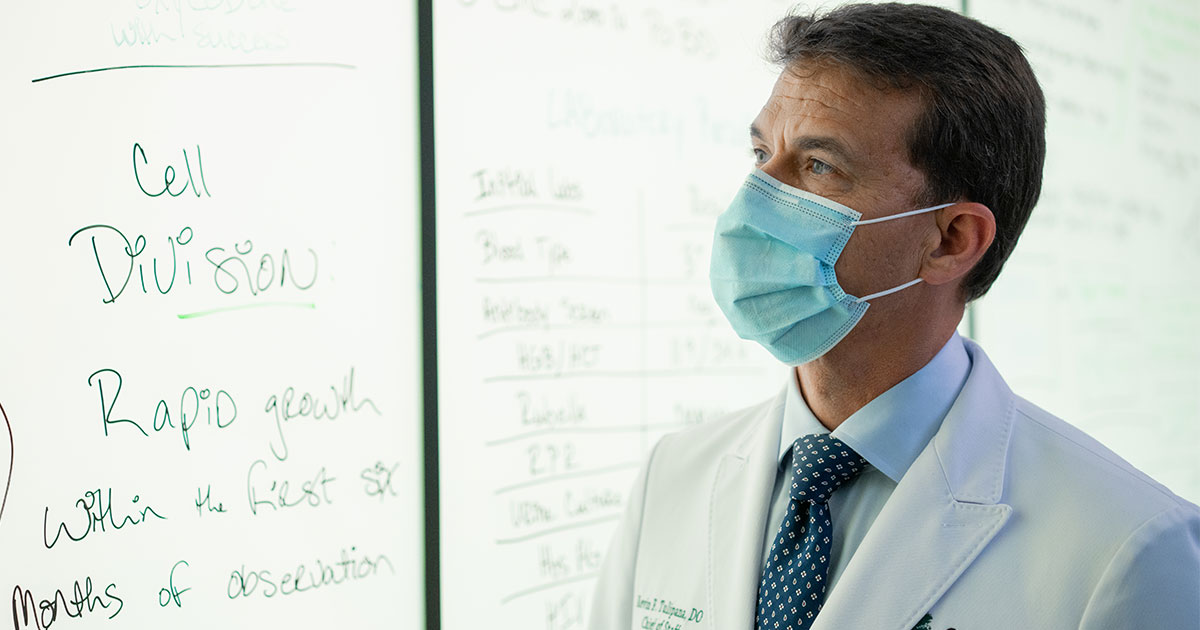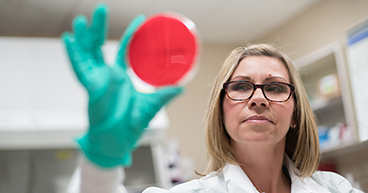
As health officials ramp up deployment of multiple vaccines to halt the spread of COVID-19, cancer care professionals are predicting a spike in cancer cases—including the diagnosis of more advanced-stage cancers—over the next several years. That’s because fewer people have been getting routine cancer screenings during the pandemic, putting off medical tests out of fear they may catch the virus in the hospitals or clinics offering the screenings.
Another potential victim in the collateral damage the pandemic is causing: clinical trials and their participation rates, which have also taken a hit because of COVID-19 fears. The studies are a critical way of proving the safety and effectiveness of new drugs and innovative treatments. And yet, when the pandemic started, some clinical cancer trials shut down permanently, while others are slowly resuming, creating a delay in the research pipeline that may hinder how quickly new cancer treatments come to market in the next few years.
A November report in the American Journal of Managed Care (AJMC) says that “keeping patients informed about the safety of receiving treatment and participating in studies” is critical to convincing patients to get screened for cancer, receive treatment and participate in clinical trials as the pandemic continues.
About 20 percent of cancer patients are less likely to enroll in because of the pandemic—according to a survey published in JAMA Oncology in November—and those respondents say they likely would stay away from the trials until the pandemic is over. The early days of the pandemic, in fact, had a severe impact on cancer clinical trials, seeing a 41 percent decline in participants in April compared to the same period in pre-pandemic 2019, according to the survey.
Medical professionals hope that both declines—fewer people getting tested and fewer oncology clinical trial participants—will reverse themselves as more people are vaccinated from COVID-19 and resume normal health practices.
Critical cancer treatment
Arturo Loaiza-Bonilla, MD, Medical Director of Clinical Research at Cancer Treatment Centers of America® (CTCA), says delays in clinical trials and declines in enrollment may already be impacting treatment options for some cancer patients.
“A major component of our treatment delivery is getting access to novel treatments, including clinical trials, so we have been very focused on keeping the clinical trial and clinical research enterprise moving forward as before,” Dr. Bonilla says.
The pandemic is especially impacting clinical trials in two ways: the trial phases the studies are able to reach and the types of therapies being studied.
Phase 1 trials, where researchers are trying to determine correct dosing or the safety of a new drug or technique, and Phase 3 trials, where large numbers of participants are needed, have had the most difficulty attracting participants during the pandemic. Phase 2 trials, which examine the efficacy of a particular treatment and are more likely to affect a patient’s cancer outcome, have been more successful in maintaining enrollment during COVID-19, Dr. Bonilla says.
Cancer research trials have also largely revolved around studies that are treatment-oriented rather than those that deal with quality-of-life or survivorship issues.
“It’s still going to be probably a one-, two-year endeavor before we go back to a certain level of normality on enrollment,” Bonilla says of clinical trials overall.
Changing trial protocols
Many of the clinical trials that have been able to continue course have adapted to the pandemic environment, following guidance from the U.S. Food and Drug Administration and other regulatory agencies.
“Part of the reason trials have been able to continue is because of changes in procedures that are allowed for the studies,” Dr. Bonilla says. “If we’re able to do screening more local, more at home, that will be probably the way to overcome some of these issues we’re facing.”
Changes that some trials have implemented include:
- Using telehealth opportunities to limit in-person visits and follow-up appointments
- Using e-signature resources for verifying trial documentation
- Shipping oral medications to participants rather than requiring them to be picked up at a clinic
- Using outside labs to conduct tests closer to where a participant lives to
Many Americans have also learned how to be safe enough so they can carry on with their lives during the pandemic, particularly by taking advantage of well-known precautions to avoid COVID-19 infection: wearing masks, socially distancing, limiting time outside of the home and washing hands frequently.
The future of clinical trials
Still, some of the changes may produce some negative consequences, according to a September article in the Cancer Therapy Advisor.
Researchers, for example, may miss troubling symptoms during a telehealth visit that would have been more noticeable during an in-person appointment. Older patients or those with co-morbidities that put them at greater risk of adverse effects from COVID-19 may be less inclined to take part in a trial, while people who have lost health insurance because they’ve lost their job may be more willing to participate, altering the make-up of trials being offered during the pandemic.
The changes may also impact the extent of the studies. The National Cancer Institute says difficult-to-obtain secondary biospecimens, which may provide additional information not directly related to the main objective of a study, don’t have to be collected. Those secondary specimens are often important to advancing overall cancer research.
Still, the lessons learned and practices implemented during the pandemic may benefit future clinical trials and make them more accessible to a wider range of participants. That access may be made available by offering telehealth to meet with patients or procedures designed to keep patients safe from COVID-19 that also make it easier to perform necessary testing and information gathering closer to home. For instance, patients who receive oncology treatments at home, have special equipment that allows doctors to monitor certain vital signs remotely.
“There could be some quality issues, and that’s why we always need to have oversight on any changes that we’re doing,” Dr. Bonilla says. “In the end, it’s all about what helps the patient and helps move science in the right direction.”
Learn how mRNA technology was used to create COVID-19 vaccines.



